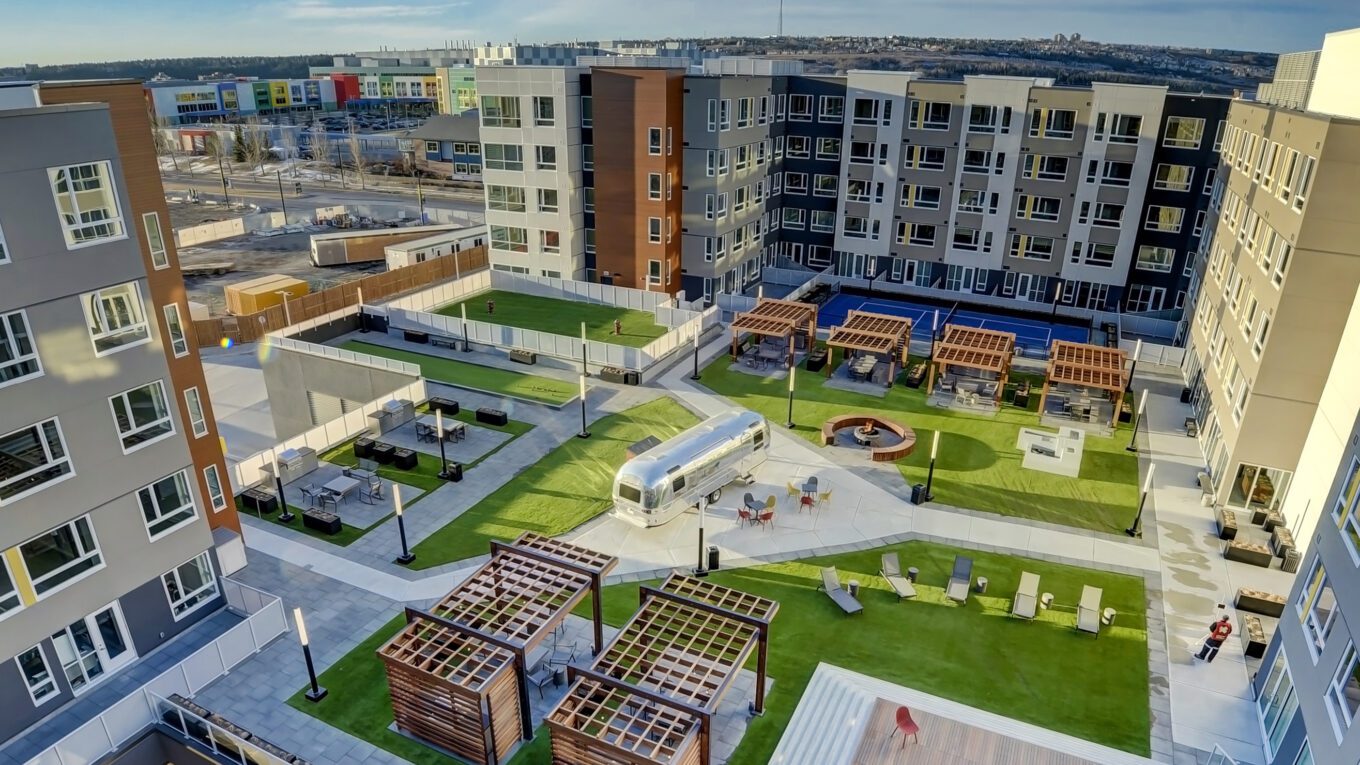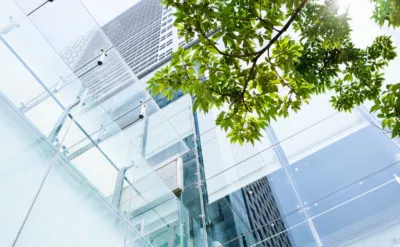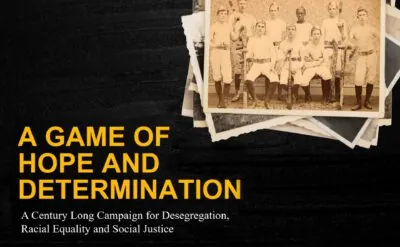Globally, urban centers are 15-degrees warmer compared to their adjacent natural hinterlands. This is caused by a phenomenon called the urban heat island effect. It’s driven by a city’s amalgam of heat-absorptive materials, such as masonry and asphalt, which by their nature store heat. Vegetation, on the other hand, controls temperatures by reflecting solar radiation, providing shade and humidification – cooling microclimates through evapotranspiration.
With the growth of urbanization, it is projected that 70% of the global population will live in cities by 2050. The impacts of global warming combined with the urban heat island effect are becoming more profound. There are now longer heatwaves, air pollution via wildfires, rolling blackouts and diminishing water sources.
Urban Heat Island Impact
Urban heat is harming our cities and the people who live in them. Local-level decision-makers are best suited to act expediently. They need to plan and execute place-based resiliency strategies to mitigate the impacts of urban heat. On a broader scale, these strategies positively contribute towards provincial, state and federal mandates. They support increased resiliency and decarbonization by, or before, 2050.
The most important decision to assess is how much protection is necessary over the anticipated life of a building. Determining this will identify which strategies result in the best outcomes, per investment, based upon several variables. These include government mandates for sustainability and resiliency, geography and building typology function, and existing/social infrastructure in place to support the ability to rebound post disruption – to name a few.
In this Insight Article, we explore place based resiliency strategies and solutions. Specifically, top-level pathways for decarbonization. We see a connected role between governments, planners, owners, architects and engineers to reduce, adapt and mitigate these impacts. With the continued surge in urban regeneration, we ignite a sense of urgency around this crucial topic. We want to promote sitewide and building-specific measures, and networks, to make our cities cool again.
Government Mandates for Sustainability and Resiliency
Understanding government mandates is an excellent starting point to define resiliency thresholds for projects. Such mandates are evolving as climate change worsens and are specific drivers for place-based solutions, unique to each municipality. Effective urban heat resilience planning requires clear goals and metrics, well-defined strategies that align to the mandates, inclusive participation and being prepared to manage uncertainty.
Across our three regions – Canada, the US and UK – there are a myriad of mandates at multiple levels of government that can be leveraged to mitigate urban heat, including:
- England’s Environment 2021 Bill requires projects to demonstrate a post-development, Biodiversity Net Gain (BNG). While geared towards regenerating lost bio-habitat, a major co-benefit of this policy, over time, will be a reduction in the urban heat island effect.
- Chicago Zoning Ordinance 17-4-1015 (2015), extends their flagship green roof legislation (enacted, 2000) by allowing developers additional FAR when covering >50% of rooftops with vegetation: reducing urban heat, increasing habitat, and mitigating stormwater, over time.
- Canadian Federal Sustainability Development Strategy (FSDS) ensures that federally funded projects conduct current and future risk assessments to increase resiliency, reduce GHGs and align with specific UN Sustainability Development Goals
Geography and Building Typology Function
Resiliency is place based. For example, coastal resiliency is primarily concerned with rising sea levels and storm surge (a.k.a. too much water), while drier, inland and/or mountainous climates are more concerned about water scarcity – amongst other issues. Regardless, the urban heat island effect is a common driver for resiliency across all geographies, linking its mitigation to decarbonization strategies for all urban areas.
The illustration below shows the City of Calgary’s pathway to decarbonization by 2050. Like many global cities, Calgary has created city-specific guidelines for how to leverage new developments to foster these broad goals through buildings, transportation and social networks. Their design offers a major opportunity to decarbonize and mitigate urban heat while promoting other components of increased resiliency, such as stormwater mitigation and improved health. This can be primarily achieved through:
- Specifying reflective/vegetated two-dimensional site surfaces (roofs and/or at grade)
- Specifying architectural shading devices, reflective finishes, etc. for microclimatic cooling
- Transforming/reclaiming auto-centric “grey” infrastructure into “green” infrastructure
- Increasing density to promote physical activity, public transit and structured parking
Calgary Climate Strategy – Pathways to 2050
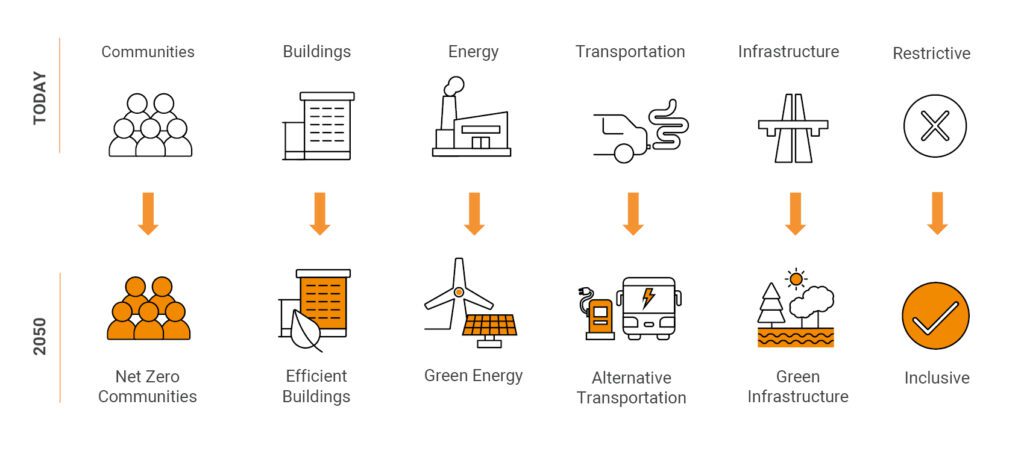
Another consideration for buildings is their function. While commercial buildings might consider short-term shelter-in-place measures, critical use facilities, such as police stations or hospitals, must remain operational throughout an emergency. Such facilities should consider the widest range of potential risks. However, as we saw during the pandemic, our homes became areas of refuge, meriting equal consideration. Regardless, there are strategies both private and commercial buildings can utilize to mitigate urban heat, in addition to the points above:
- Implement a tenant/community emergency preparedness plan
- Store onsite supplies (batteries, flashlights, etc.) and equipment (72-hour backup power)
- Design communal spaces to double as areas of refuge
- Provide accessible drinking water access in buildings/public spaces
- Design low energy active strategies into buildings (load shedding, ceiling fans, etc.)
- Maximize passive strategies in buildings, including operable windows for ventilation/cooling, enhanced insulation to resist heat, and water features for evaporative cooling
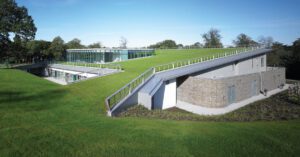
Existing and Social Infrastructure
How can cities, thought of as static objects, adapt to mitigate urban heat at scale? The simple answer is it will take all stakeholders – commercial, residential and institutional – to meaningfully pivot. Since urban heat is a man-made phenomenon, it can be reversed. It can also pay dividends. The Intact Centre at the University of Waterloo estimates that a $1 invested into resiliency provides a $3-$8 ROI. While each case is unique, through improving buildings, greening public realms, and promoting better health, the realization of ROI comes through elevated property values, reduced churn, less disruptions and improved quality of life.
It’s important to note that design features which instill the greater resiliency also benefit people during times of normal operations. Growing environmental and social justice movements strengthen this argument, particularly since those most affected by urban heat are the poor, children, elderly and the unhoused. This is getting the attention of CRE, municipalities, and investors, particularly as the number and cost of emergencies increase. By investing in the most climate-vulnerable areas and populations, CRE can strengthen Environmental, Social and Corporate Governance (ESG) measures, improve the lives of vulnerable communities through shared benefits, and help cities solve their most pressing climate challenges in a phased capacity over time.
Place-Based Strategy Planning and Pathway
Investment in resiliency should benefit both the individual property owner and the broader community a property serves/exists within. By hardening assets against urban heat, and other risks, property owners can differentiate their assets, increase value, reduce disruptions and attract/retain tenants. Additionally, they can increase social value/equity, leveraging investment through new development to protect the wider community upon which it relies.
Urban heat mitigation strategies can make our cities, and people, more resilient by helping to reduce energy consumption, lowering GHGs, managing stormwater, increasing biodiversity, and promoting health. The time to act is now.
Start a conversation about how to determine the appropriate place-based strategy.
